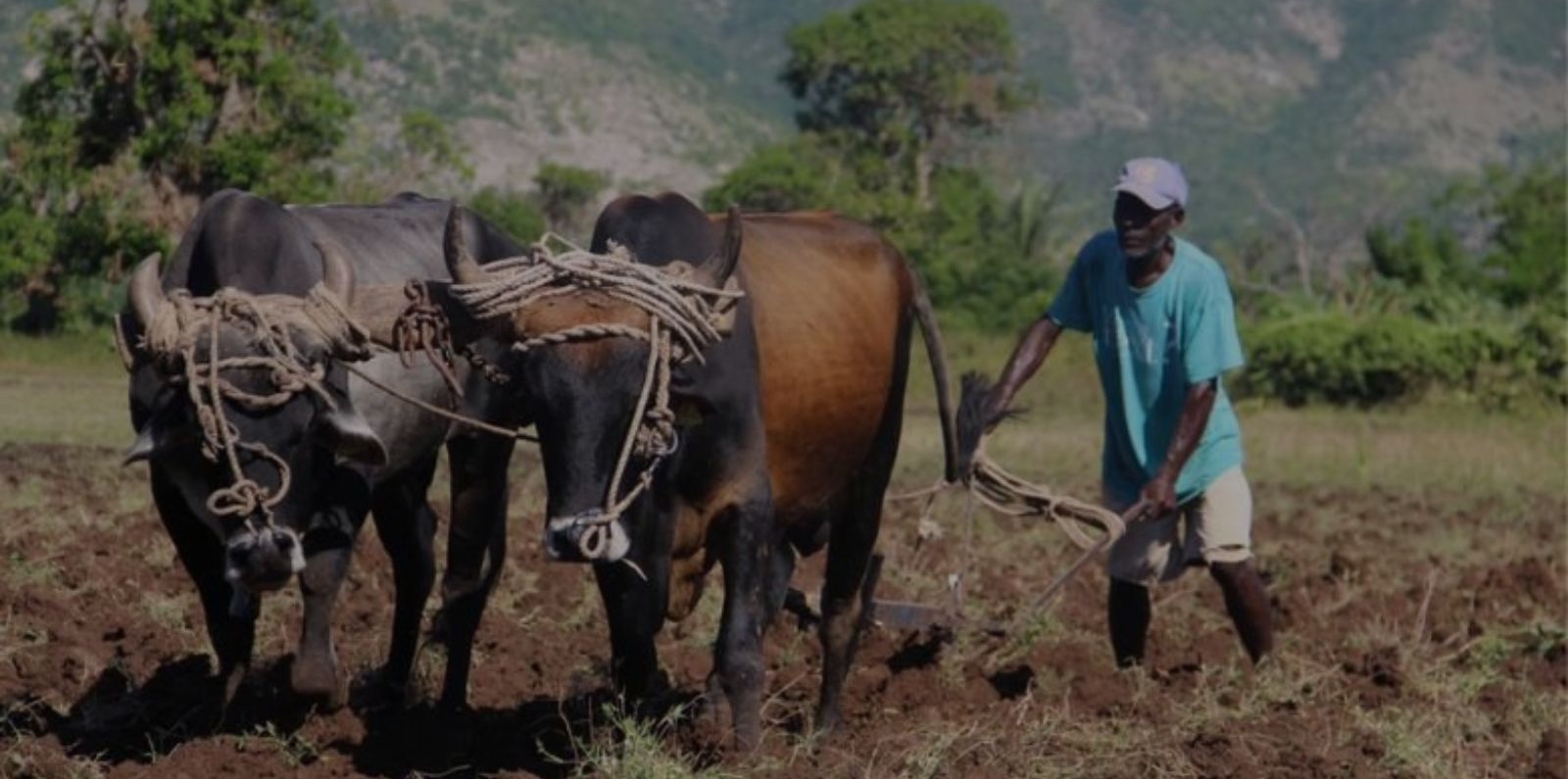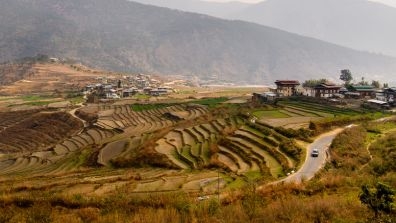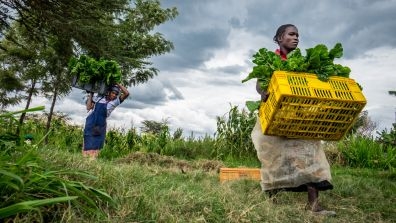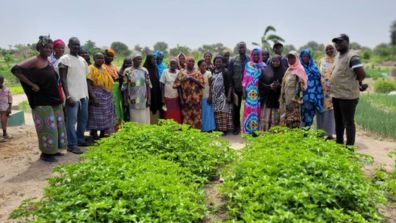This story was originally published on the World Bank website.
A World Bank project strengthened the institutional capacity of Haiti’s Ministry of Agriculture and Rural Development by accessing technologies to increase not only agricultural productivity and production but also improved livelihoods and resilience. The project developed irrigation and drainage on 2,244 hectares; established 115 farmer field schools, and trained facilitators in agricultural extension techniques. A total of 78,242 small producers increased their market access, 50 percent of whom were women; more than 3,368 private and public sector staff (including staff from the Ministry of Agriculture, and municipal staff, among others) and 600 farmers were trained on surveillance and vaccination, the use of fruit fly traps, mealybugs control, and protection of animals against rabies and anthrax and more than 3.6 million animals were vaccinated
Challenge
By 2010, Haiti, the poorest country in Latin America and the Caribbean, had 78 percent of its population living on less than $2 per/day and 88 percent of those in rural areas living below the poverty line. Basic services were practically nonexistent and multidimensional poverty was widespread. Disasters severely hit Haiti, with soaring food prices. Agriculture played an important role in the economy, contributing 25 percent of GDP and around 50 percent of employment yet, farmers lacked access to technologies and capacity building to increase production and productivity. Chronic under-investment in the rural economy (infrastructure, public services) and ineffective natural resource management depleted rural productivity, leading to dependence on grain imports. The government and specifically the Ministry of Agriculture, lacked the institutional capacity to provide agricultural public services, technologies and capacity building to farmers and therefore, food insecurity increased exponentially.
Approach
Building and strengthening institutional capacity was the core priority for providing agricultural public services, directly addressing the Ministry of Agriculture’s constrained ability to support farmers in accessing proper technologies and capacity building to increase production, productivity, livelihoods, and resilience; as well as providing access to services in the agricultural sector and increasing market access to small producers and food security in selected areas. In addition, improving livelihoods in areas affected by Hurricane Matthew and enabling the government to respond promptly and effectively to emergencies was also a priority in Haiti.
The project reinforced the Ministry’s institutional capacity to support farmers in accessing proper technologies and capacity building to increase production, productivity, livelihoods, and resilience, by developing sectorial strategies and training key staff and facilitators, as well as farmers, veterinarians and the private sector to improve their access to services in the agricultural sector. The strengthened institutional capacity and acquired knowledge helped the Ministry better handle emergency responses in times of crisis. In this regard, to enhance its institutional capacity, the Ministry successfully developed key strategies, such as the quarantine strategy and the strategy to fight the mealybug infestation, as well as training of facilitators in extension techniques and of private and public officials in animal health surveillance and vaccination, to farm-level outcomes such as the application of fruit fly traps by farmers and the protection of animals against rabies and anthrax.
Results
During the implementation of the project, the Ministry of Agriculture enhanced and reinforced its institutional capacity to provide public agricultural services, and small farmers increased their access to agriculture extension services and training on animal and plant health. In this regard, the Ministry managed to develop key sectorial strategies on quarantine strategies on mealybug infestation, and trained facilitators, private and public officials and to farm-level outcomes to provide or facilitate access to relevant services on animal health, vaccination, and animal protection. Moreover, the project contributed to increased market access for small producers and improved food security by establishing a Market Support Facility - MSF, co-financing, on a matching-grant basis, investments and activities for productive purposes, strengthening of producer organizations; improvements in post-harvest and agribusiness technology; strengthening of MSF’s institutional capacity, technical assistance for rural producer organizations, and support for the expansion of voucher-based Farmer Subsidy System, which subsidized the adoption of improved agricultural technologies by individual farmers, including a line of subsidies for agroforestry to enhance climate resilience.
Furthermore, the project supported animal husbandry, to restock livestock following Hurricane Matthew, and implemented irrigation rehabilitation and micro-catchment protection, which was performed, among others, through a cash-for-work program for small-scale, labor-intensive rehabilitation works, with the aim of improving local livelihoods. Thus, the project accomplished the following results, which led to significant advances in technology adoptions, improved breeds of livestock, improved pasture management; production of nutrient-dense foods through the use of biofortified seeds, improved biodiversity and zinc-based fertilizers; upgraded food harvesting and storage techniques to reduce aflatoxin; adjustment of cropping calendars and the promotion of new crop varieties better suited to local conditions, and improved irrigation/water management practices:
- 115 farmer field schools were established and facilitators in agricultural extension techniques (including international training), as well as farmers and municipal staff, were trained, 3,368 of whom were private and public sector staff were trained in surveillance and vaccination, 500 farmers were trained to use fruit fly traps and 578 farmers were trained in mealybugs control in the Northeast.
- 2,244 hectares of irrigation and/or drainage services were improved to restore and increase the resilience of irrigation infrastructure against future climatic disasters (in Les Anglais, Dory, Dubreuil and Melon).
- 3,800 farmers benefitted from irrigation rehabilitation in four irrigated perimeters (Dory, Dubreuil, Les Anglais and Melon), damaged as a result of Hurricane Matthew.
- The value of production generated by the farmer subsidy scheme program increased by $33 million and the sales of the project-supported producer organizations increased by 172 percent.
- 78,242 direct project beneficiaries increased access to markets, 36,774 of which were female (47 percent equivalent).
- Training for epidemiological volunteers and private veterinarians led to 1.2 million animals vaccinated against rabies and 2.4 million vaccinations were administered against anthrax.
- Through farmers' field schools, incentives were provided to 21,739 farmers (44 percent of whom were women) covering an agricultural area of 11,113 hectares; the incentives included financing improved seed varieties, motorized pumps, and the establishment of creole gardens. In addition, the MSF provided direct support to 132 rural producer organizations for sub-projects benefitting 7,452 households.
- 7,452 people (85 percent women) in the South and Grand'Anse Departments benefitted from technical packages for goats and poultry, including animals, forage, and enclosures, to help recapitalize producers who had experienced losses due to disasters.
- 27, 958 households affected by Hurricane Matthew received support from the Crisis Response Window and 50,888 Haitians in the Southern Region benefited from the project.
In addition, RESEPAG II increased awareness and provided training on nutrition issues. Some sub-projects were required to be sensitive to gender, environment, and nutritional issues, for that reason, 607 trainers on nutrition issues were trained, of whom 44 percent were women, reaching out to around 15,000 project beneficiaries. As well, the agricultural and livestock production supported by the project also enhanced the availability and nutritional value of food for beneficiaries.
Bank Group Contribution
The International Development Association (IDA) provided financing of $75 million while the World Bank-administered Global Agriculture and Food Security Trust Fund Program funded $10 million of the project.
Partners
The Ministry of Agriculture, Natural Resources and Rural Development of the Republic of Haiti (MARNDR) had an important role of implementing the project. The Global Agriculture and Food Security Program (GAFSP) participated in the strengthening of the institutional capacity of MARNDR to provide agricultural public services. In addition, the Inter-American Development Bank (IDB) installed 40,000 fruit fly traps and provided training to farmers in the installation and implementation of the referred traps.
Looking Ahead
The RESEPAG II Project is a clear example of the effectiveness of localized interventions to achieving transformational change in a fragile country. Efforts to continue supporting Haiti and the agriculture sector are reflected in the Emergency Resilient Agriculture for Security (PARSA) Project, approved in 2022, with the main objective to support beneficiaries’ access to nutritious food and increase climate and nutrition-smart agricultural production, including in earthquake-affected areas. The experience and lessons learned from the RESEPAG II Project, and other initiatives, such as the Resilient Productive Landscapes in Haiti Project will serve as baseline and key approaches to effectively support Haitians in accessing nutritious food while continuing strengthening of the Ministry of Agriculture’s institutional capacities to help farmers increase production, productivity, livelihoods, and resilience. In addition, the PARSA project benefits from the experience of staff who worked in the RESEPAG II Project Implementation Unit (agency for the CERC), which now are part of PARSA’s Project Implementation Unit. As well, as RESEPAG II’s CERC Manual, which is integrated into the Project Operations Manual for PARSA.




